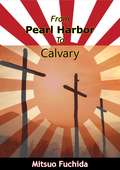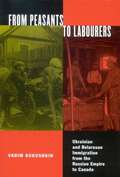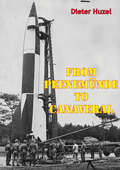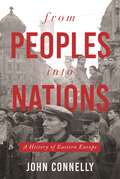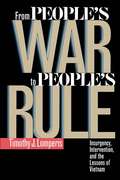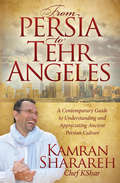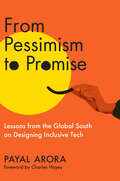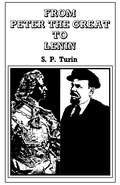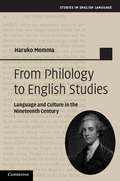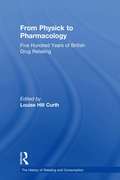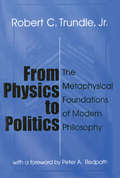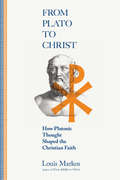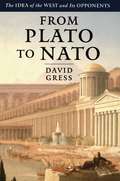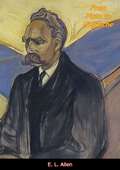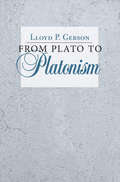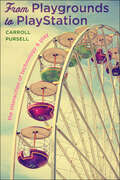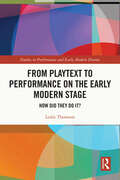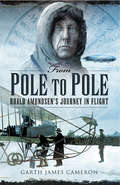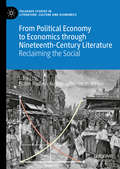- Table View
- List View
From Pearl Harbor To Calvary
by Mitsuo FuchidaThe true story of the lead pilot of the Pearl Harbor attack and his conversion to Christianity."As I looked across at my companion, I marveled afresh at the goodness of God-this man was my enemy; now he is my brother! Such is the miracle of the grace of God."--Rev. Elmer Sachs, Director of Sky Pilots International.These words were written of Mitsuo Fuchida, who led the first wave of the air attacks on Pearl Harbor on December 7, 1941 as a Captain in the Imperial Japanese Navy Air Service. After the war, Fuchida was introduced to the gospel through the testimony of Jacob DeShazer. He began reading the Bible and eleven years after Pearl Harbor, he became a Christian.Fuchida spoke boldly of his conversion in his native Japan, and a few years later, he was recruited by Rev. Elmer Sachs to join Sky Pilots International. He came to the United States where he had the opportunity to share his story across the country. From Pearl Harbor to Calvary is the story of Mitsuo Fuchida's conversion and ministry in his own words. Central to his narrative is the message that God works through even the most improbable of circumstances to further the gospel.
From Peasants to Labourers: Ukrainian and Belarusan Immigration from the Russian Empire to Canada (McGill-Queen's Studies in Ethnic History #23)
by Vadim KukushkinWritten from the migration systems perspective, From Peasants to Labourers places the migration of Ukrainian and Belarusan peasant-workers within the context of Old- and New-World economic structures and state policies. Through painstaking analysis of thousands of personal migrant files in the archives of the Russian consulates in Canada, Kukushkin fills a void in our knowledge of the geographic origins, spatial trajectories, and ethnic composition of early twentieth-century Canadian immigration from Eastern Europe. From Peasants to Labourers also provides important insights into the nature of ethnic identity formation through an exploration of the meaning of "Russianness" in early twentieth-century Canada.
From Peenemünde To Canaveral
by Dieter HuzelDieter Huzel was an electronic engineer with his whole career ahead of him when Germany lurched into the Second World War, he was conscripted and destined for the Russian Front when fate intervened. He and many other scientists were re-assigned from combat duty to the top secret installation at Peenemünde Island off the Baltic coast as part of the Nazi search for "Wonder Weapons". Huzel describes how he became an integral part of the V weapon program which, despite the frequent Allied bombings, produced the feared V-1 and V-2 rockets that rained down on liberated parts of Europe during the later years of the war.As the tide turned against the Nazi regime, Huzel tells of the shifts in production of these weapons to central Germany and his team's rising fear that the rocket technology would fall into the hands of the Russians. However, Huzel and his team were captured by the West and offered re-location to Britain or America. Huzel and his former director, Werner Von Braun, opted for America where they would become part of the ground-breaking Rocketdyne research team and spearhead of the NASA push for space exploration.
From Peoples into Nations: A History of Eastern Europe
by John ConnellyA sweeping narrative history of Eastern Europe from the late eighteenth century to todayIn the 1780s, the Habsburg monarch Joseph II decreed that henceforth German would be the language of his realm. His intention was to forge a unified state from his vast and disparate possessions, but his action had the opposite effect, catalyzing the emergence of competing nationalisms among his Hungarian, Czech, and other subjects, who feared that their languages and cultures would be lost. In this sweeping narrative history of Eastern Europe since the late eighteenth century, John Connelly connects the stories of the region's diverse peoples, telling how, at a profound level, they have a shared understanding of the past.An ancient history of invasion and migration made the region into a cultural landscape of extraordinary variety, a patchwork in which Slovaks, Bosnians, and countless others live shoulder to shoulder and where calls for national autonomy often have had bloody effects among the interwoven ethnicities. Connelly traces the rise of nationalism in Polish, Austro-Hungarian, and Ottoman lands; the creation of new states after the First World War and their later absorption by the Nazi Reich and the Soviet Bloc; the reemergence of democracy and separatist movements after the collapse of communism; and the recent surge of populist politics throughout the region.Because of this common experience of upheaval, East Europeans are people with an acute feeling for the precariousness of history: they know that nations are not eternal, but come and go; sometimes they disappear. From Peoples into Nations tells their story.
From People’s War to People’s Rule
by Timothy J. LomperisTimothy Lomperis persuasively argues the ironic point that the lessons of American involvement in Vietnam are not to be found in any analysis of the war by itself. Rather, he proposes a comparison of the Vietnam experience with seven other cases of Western intervention in communist insurgencies during the Cold War era: China, Indochina, Greece, the Philippines, Malaya, Cambodia, and Laos. Lomperis maintains that popular insurgencies are manifestations of crises in political legitimacy, which occur as a result of the societal stresses caused by modernization. Therefore, he argues, any intervention in a 'people's war' will succeed or fail depending on how it affects this crisis. The unifying theme in the cases Lomperis discusses is the power of land reform and electoral democracy to cement political legitimacy and therefore deflect revolutionary movements. Applying this theory to the ongoing Sendero Luminoso insurgency in Peru, Lomperis makes a qualified prediction of that conflict's outcome. He concludes that a global trend toward democratization has produced a new era of 'people's rule.'
From Persia to Tehr Angeles: A Contemporary Guide to Understanding and Appreciating Ancient Persian Culture
by Kamran Sharareh Chef KSharAn Iranian-American explains the history and heritage of his people, in both the old world and the new. From Persia to Tehr Angeles is a fascinating look at everything from Persia&’s ancient past to the modern world of Persian-American immigrants in places like Los Angeles—offering a rich, rounded view a culture many are unfamiliar with. For those who are part of this history, their friends and families, or anyone interested in this corner of the world, it&’s an enlightening look at traditions, food, religion, and other aspects of this complex society over many generations.
From Pessimism to Promise: Lessons from the Global South on Designing Inclusive Tech
by Payal AroraA radical paradigm shift in the way we think about AI and tech, taking hope and inspiration from the aspirational users of new technologies around the world.When it comes to tech, the mainstream headlines are bleak: Algorithms control and oppress. AI will destroy democracy and our social fabric, and possibly even drive us to extinction. While legitimate concerns drive these fears, we need to equally account for the fact that tech affords young people something incredibly valuable—a rare space for self-actualization. In From Pessimism to Promise, award-winning author Payal Arora explains that, outside the West, where most of the world’s youth reside, there is a significant different outlook on tech: in fact, there is a contagion of optimism toward all things digital. These users, especially those in marginalized contexts, are full of hope for new tech.As AI disrupts sectors across industries, education, and beyond, who better to shine the light forward, Arora argues, than the Global South, the navigator of all manner of forced disruptions, leapfrogging obstructive systems, norms, and practices to rapidly reinvent itself? Drawing on field insights in diverse global contexts such as Brazil, India, and Bangladesh, Payal describes what drives Gen Z to embrace new technologies. From Pessimism to Promise discusses the shift to relationally-driven approaches to design; how to create “algorithms of aspiration”; how to reimagine the digital space for sex, pleasure, and care; and, what we can learn from feminist digital activists and women’s collectives in the Global South on shared digital provenance and value, as well as indigenous approaches to sustainability, that challenges sacred ideas on degrowth, circular economy, and the doughnut economy. Arora also takes heart in the power in numbers, as the users from the majority world infuse algorithms with everyday aspirations, pushing for a new digital order.Timely and urgent, From Pessimism to Promise makes a deeply compelling case that it is not naïve to be optimistic about our digital future. On the contrary, it is our moral imperative to design with hope.
From Peter the Great to Lenin Cb: History of Russian Labour Movement With Special Reference to Trade Unionism
by S.P. TurinFirst published in 1968, the main purpose of this study is to present an account of the Russian Labour Movement, based mainly on original Russian sources. The Labour Movement differed greatly from those of the chief European countries from its inception to the final stage. This text investigates the main trends of the m; to analyse the origins and nature of soviets; and to describe the scope and character of the Russian Labour organization.
From Philology to English Studies
by Haruko MommaThe study of English language and literature in Britain changed dramatically between the end of the eighteenth century and the beginning of the twentieth. From Philology to English Studies explores the contribution of philology to this movement. Haruko Momma charts both the rise and fall of philology from antiquity to the late eighteenth century, and the impact of modern philology on the study of modern languages and literatures. Focusing in detail on the work of key philologists in the nineteenth century, Momma considers how they shaped European discourse and especially vernacular studies in Britain: William Jones's discovery of Sanskrit in British India gave rise to Indo-European studies; Max Müller's study of this same language helped spread the Aryan myth to the English-speaking world; the OED achieved its greatness as a post-national lexicon under the editorship of James Murray, a dialectologist originally from Scotland.
From Physicians’ Professional Ethos towards Medical Ethics and Bioethics: A German Perspective on Historical Experiences and Lasting Commitments (Philosophy and Medicine #140)
by Corinna Delkeskamp-HayesThis book assembles essays by thinkers who were at the center of the German post World War II development of ethical thought in medicine. It records their strategies for overcoming initial resistance among physicians and philosophers and (in the East) politicians. This work traces their different approaches, such as socialist versus liberal bioethics; illustrates their attempt to introduce a culture of dialogue in medicine; and examines their moral ambiguities inherent to the institutionalization of bioethics and in law. Furthermore, the essays in this work pay special attention to the problem of ethics expertise in the context of a pluralism, which the intellectual mainstream of the country seeks to reduce to “varieties of post-traditionalism". Finally, this book addresses the problem of “patient autonomy”,and highlights the difficulty of harmonizing commitment to professional integrity with the project of enhancing physician’s responsiveness to suffering patients. As these essays illustrate, the development of bioethics in Germany does not follow a linear line of progressiveness, but rather retains a sense of the traditional ethos of the guild. An ethos, however, that is challenged by moral pluralism in such a way that, even today, still requires adequate solutions. A must read for all academics interested in the origins and the development of bioethics.
From Physick to Pharmacology: Five Hundred Years of British Drug Retailing (The History of Retailing and Consumption)
by Louise Hill CurthFrom Physick to Pharmacology addresses the important, albeit neglected history of the distribution and sale of medicinal drugs in England from the sixteenth to the twenty-first century. The social history of early medicine and the evolution of British retailing are two areas that have attracted considerable attention from academics in recent years. That said, little work has been done either by medical or business historians on the actual retailing of drugs. This book merges the two themes by examining the growth in the retailing of medicinal drugs since late-medieval times. The six academics contributing essays include both medical and business historians who provide an informed and stimulating perspective on the subject. After an introduction setting out the context of drug retailing and surveying the current literature, the volume is arranged in a broadly chronological order, beginning with Patrick Wallis's study of apothecaries and other medical retailers in early modern London. The next chapter, by Louise Hill Curth, looks at the way the distribution network expanded to encompass a range of other retail outlets to sell new, branded, pre-packaged proprietary drugs. Steven King then examines various other ways in which medicines were sold in the eighteenth century, with a focus on itinerant traders. This is followed by pieces from Hilary Marland on the rise of chemists and druggists in the nineteenth century, and Stuart Anderson on twentieth-century community pharmacists. The final essay, by Judy Slinn, examines the marketing and consumption of prescription drugs from the middle of that century until the present day. Taken together, these essays provide a fascinating insight into the changes and continuities of five centuries of drug retailing in England.
From Physics to Politics: The Metaphysical Foundations of Modern Philosophy
by Robert TrundleMass ideology is unique to modern society and rooted in early modern philosophy. Traditionally, knowledge had been viewed as resting on metaphysics. Rejecting metaphysical truth evoked questions about the source of -truth.- For nineteenth-century ideologists, -truth- comes either from dominating classes in a progressively determined history or from a post-Copernican freedom of the superior man to create it. In From Physics to Politics Robert C. Trundle, Jr. uncovers the relation of modern philosophy to political ideology. And in rooting truth in human nature and Nature by modal reasoning, he resolves the problem of politicized truth. Our concepts of scientific truth, logic, and necessity are essentially connected. Modern philosophy restricts our understanding of necessity to the political dreams and aspirations of Enlightenment intellectuals. As a result, these intellectuals refuse to acknowledge as factual or meaningful whatever is not intelligible within the practical goals of establishing science as a system of enlightened ideas. The effect of these ideas is that in our time metaphysical principles, speculative truths, our understanding of science, and the nature of logic have become subordinated to ideological dreams. Fascism, Nazism, Marxism, political correctness, and moral relativism are not historical aberrations but essential consequences. Trundle's work is groundbreaking and daring, and his underlying thesis demonstrates why scientific truth demands a modal defense. The defense not only integrates science, ethics, and politics, but shows how -truth- may be ascribed to moral and scientific principles in contrast to a modern philosophical tradition. Since this tradition is the origin of political ideology, it has led to an irrational politicization of truth. The book will appeal particularly to those interested in political history, histories of philosophy, the philosophy of sciences, and ethics.
From Pigeons To Tweets: A General Who Led Dramatic Changes in Military Communications
by Hank Cox Jr. Clarence E. Mcknight Jr.General Clarence E. McKnight led the US Army into the modern age of computer warfare developing portals through which new channels of digitalizations flowed to a welcoming civilian usage. A graduate of West Point Academy, McKnight rose to the rank of Commanding General of the US Army's Signal Corps developing technology used by all the military services. McKnight was made a distinguished graduate of West Point, an uncommon honor and is being inducted into the US Army War College Museum for distinguished alumnus. This book is about military communications and how they developed strategies over the years to what we now use in the most advanced technology, science and engineering.
From Pigeons To Tweets: A General Who Led Dramatic Changes in Military Communications
by Hank Cox Jr. Clarence E. Mcknight Jr.General Clarence E. McKnight led the US Army into the modern age of computer warfare developing portals through which new channels of digitalizations flowed to a welcoming civilian usage. A graduate of West Point Academy, McKnight rose to the rank of Commanding General of the US Army's Signal Corps developing technology used by all the military services. McKnight was made a distinguished graduate of West Point, an uncommon honor and is being inducted into the US Army War College Museum for distinguished alumnus. This book is about military communications and how they developed strategies over the years to what we now use in the most advanced technology, science and engineering.
From Plato to Christ: How Platonic Thought Shaped the Christian Faith
by Louis MarkosWhat does Plato have to do with the Christian faith? Quite a bit, it turns out. In ways that might surprise us, Christians throughout the history of the church and even today have inherited aspects of the ancient Greek philosophy of Plato, who was both Socrates's student and Aristotle's teacher. To help us understand the influence of Platonic thought on the Christian faith, Louis Markos offers careful readings of some of Plato's best-known texts and then traces the ways that his work shaped the faith of some of Christianity's most beloved theologians, including Gregory of Nyssa, Augustine, Dante, and C. S. Lewis. With Markos's guidance, readers can ascend to a true understanding of Plato's influence on the faith.
From Plato to Lumière
by Timothy Barnard Andre GaudreaultWith this lucid translation of Du litteraire au filmique, André Gaudreault's highly influential and original study of film narratology is now accessible to English-language audiences for the first time. Building a theory of narrative on sources as diverse as Plato, The Arabian Nights,and Proust, From Plato to Lumière challenges narratological orthodoxy by positing that all forms of narrative are mediated by an "underlying narrator" who exists between the author and narrative text. Offering illuminating insights, definitions, and formal distinctions, Gaudreault examines the practices of novelists, playwrights, and filmmakers and applies his theory to the early cinema of the Lumière brothers and more recent films. He also enhances our understanding of how narrative develops visually without language - monstration - by detailing how the evolution of the medium influenced narratives in cinema. From Plato to Lumière includes a translation of Paul Ricoeur's preface to the French-language edition as well as a new preface by Tom Gunning. It is a must-read for cinema and media students and scholars and an essential text on the study of narrative.
From Plato to NATO
by David GressAn in-depth intellectual history of the Western idea and a passionate defense of its importance to America's future, From Plato to NATO is the first book to make sense of the legacy of the West at a time when it is facing its greatest challenges. Readers of Francis Fukuyama, John Gray, Samuel Huntington, and other analysts of the dilemmas of Western nations in the twenty-first century will find in David Gress's original account a fuller description of what the West really is and how, with the best of intentions, it has been misrepresented. Most important, they will encounter a new vision of Western identity and how it can be recovered. Early in the twentieth century, American educators put together a story of Western civilization, its origins, history, and promise that for the subsequent fifty years remained at the heart of American college education. The story they told was of a Western civilization that began with the Greeks and continued through 2,500 years of great books and great ideas, culminating in twentieth-century progressive liberal democracy, science, and capitalist prosperity. In the 1960s, this Grand Narrative of the West came under attack. Over the next thirty years, the critics turned this old story into its opposite: a series of anti-narratives about the evils, the failures, and the betrayals of justice that, so they said, constituted Western history. The victory of Western values at the end of the cold war, the spread of democracy and capitalism, and the worldwide impact of American popular culture have not revived the Grand Narrative in the European and American heartlands of the West. David Gress explains this paradox, arguing that the Grand Narrative of the West was flawed from the beginning: that the West did not begin in Greece and that, in morality and religion, the Greeks were an alien civilization whose contribution was mediated through Rome and Christianity. Furthermore, in assuming a continuity from the Greeks to modern liberalism, we have mistakenly downplayed or rejected everything in between, focusing on the great ideas and the great books rather than on real history with all its ambiguities, conflicts, and contradictions. The heart of Gress's case for the future of the West is that the New must remember its roots in the Old and seek a synthesis. For as the attacks have demonstrated, the New West cannot stand alone. Its very virtues -- liberty, reason, progress -- grew out of the Old West and cannot flourish when removed from that rich soil.
From Plato to Nietzsche
by E. L. AllenIDEAS THAT SHAPE OUR LIVESThis book is a clear, comprehensive guide to the philosophic and religious concepts of the world’s outstanding philosophers.Here are the great thoughts and ideas of the Western mind, selected and explained with magnificent precision by an eminent scholar.It is an illuminating portrait of man’s intellectual and moral struggle to understand the world and the meaning of human life and destiny.“Any intelligent student will have his appetite whetted by a study or perusal of this book.”—HIGHER EDUCATION JOURNAL
From Plato to Platonism
by Lloyd P. GersonWas Plato a Platonist? While ancient disciples of Plato would have answered this question in the affirmative, modern scholars have generally denied that Plato’s own philosophy was in substantial agreement with that of the Platonists of succeeding centuries. In From Plato to Platonism, Lloyd P. Gerson argues that the ancients are correct in their assessment. He arrives at this conclusion in an especially ingenious manner, challenging fundamental assumptions about how Plato’s teachings have come to be understood. Through deft readings of the philosophical principles found in Plato's dialogues and in the Platonic tradition beginning with Aristotle, he shows that Platonism, broadly conceived, is the polar opposite of naturalism and that the history of philosophy from Plato until the seventeenth century was the history of various efforts to find the most consistent and complete version of "anti-naturalism." Gerson contends that the philosophical position of Plato—Plato’s own Platonism, so to speak—was produced out of a matrix he calls "Ur-Platonism." According to Gerson, Ur-Platonism is the conjunction of five "antis" that in total arrive at anti-naturalism: anti-nominalism, anti-mechanism, anti-materialism, anti-relativism, and anti-skepticism. Plato’s Platonism is an attempt to construct the most consistent and defensible positive system uniting the five "antis." It is also the system that all later Platonists throughout Antiquity attributed to Plato when countering attacks from critics including Peripatetics, Stoics, and Sceptics. In conclusion, Gerson shows that Late Antique philosophers such as Proclus were right in regarding Plotinus as "the great exegete of the Platonic revelation."
From Playgrounds to PlayStation: The Interaction of Technology and Play
by Carroll PursellHow technology shapes play in America—and vice versa.In this romp through the changing landscape of nineteenth- and twentieth-century American toys, games, hobbies, and amusements, senior historian of technology Carroll Pursell poses a simple but interesting question: What can we learn by studying the relationship between technology and play? From Playgrounds to PlayStation explores how play reflects and drives the evolution of American culture. Pursell engagingly examines the ways in which technology affects play and play shapes people. The objects that children (and adults) play with and play on, along with their games and the hobbies they pursue, can reinforce but also challenge gender roles and cultural norms. Inventors—who often talk about "playing" at their work, as if motivated by the pure fun of invention—have used new materials and technologies to reshape sports and gameplay, sometimes even crafting new, extreme forms of recreation, but always responding to popular demand.Drawing from a range of sources, including scholarly monographs, patent records, newspapers, and popular and technical journals, the book covers numerous modes and sites of play. Pursell touches on the safety-conscious playground reform movement, the dazzling mechanical innovations that gave rise to commercial amusement parks, and the media's colorful promotion of toys, pastimes, and sporting events. Along the way, he shows readers how technology enables the forms, equipment, and devices of play to evolve constantly, both reflecting consumer choices and driving innovators and manufacturers to promote toys that involve entirely new kinds of play—from LEGOs and skateboards to beading kits and videogames.
From Playgrounds to Playstation: The Interaction of Technology & Play
by Carroll PursellThis “engaging social history of play” explores how technology and culture have shaped toys, games, and leisure—and vice versa (Choice).In this romp through the changing landscape of nineteenth- and twentieth-century American toys, games, hobbies, and amusements, technology historian Carroll Pursell poses a simple but interesting question: What can we learn by studying the relationship between technology and play?From Playgrounds to PlayStation explores how play reflects and drives the evolution of American culture. Pursell engagingly examines the ways in which technology affects play and play shapes people. The objects that children (and adults) play with and play on, along with their games and the hobbies they pursue, can reinforce but also challenge gender roles and cultural norms. Inventors—who often talk about “playing” at their work, as if motivated by the pure fun of invention—have used new materials and technologies to reshape sports and gameplay, sometimes even crafting new, extreme forms of recreation, but always responding to popular demand.Drawing from a range of sources, including scholarly monographs, patent records, newspapers, and popular and technical journals, the book covers numerous modes and sites of play. Pursell touches on the safety-conscious playground reform movement, the dazzling mechanical innovations that gave rise to commercial amusement parks, and the media’s colorful promotion of toys, pastimes, and sporting events. Along the way, he shows readers how technology enables the forms, equipment, and devices of play to evolve constantly, both reflecting consumer choices and driving innovators and manufacturers to promote toys that involve entirely new kinds of play—from LEGOs and skateboards to beading kits and videogames.
From Playtext to Performance on the Early Modern Stage: How Did They Do It? (Studies in Performance and Early Modern Drama)
by Leslie ThomsonThis book reconsiders the evidence for what we know (or think we know) about early modern performance conditions. This study encourages a new recognition and treatment of certain aspects of the plays as evidence – and demonstrates the significance of the implications of that new information. This book is also an assessment of the competing narratives about the processes involved in early modern performance: about the status of manuscript playbooks, about the parts that players memorized, about the functions of the bookkeeper, about casting, about prompting, and about rehearsal practices. Leslie Thomson investigates the bases for the interdependent beliefs that an early modern player relied only on his part to prepare for a performance, that rehearsal was minimal, and that a bookkeeper compensated for these circumstances by prompting any player who was "out of his part." By focusing on often ignored (or downplayed) requirements and challenges of early modern play texts, Thomson provides evidence for answers that will foster a more nuanced and thorough understanding of original performance practices. That will, in turn, influence how we read, study, and edit the plays. This exploration will be of great interest to theatre and performance researchers, graduate students, teachers of early modern drama at the undergraduate and graduate levels, performers, directors, editors.
From Pole to Pole: Roald Amundsen's Journey in Flight
by Garth James CameronRoald Amundsen (1872-1928) was the most successful polar explorer of his era using sledges, dogs, ski and ships. He is mainly remembered for being the first man to reach the South Pole on 14 December 1911. What is less often remembered is that he was also the first man to reach the North Pole on 12 May 1926 as the leader of the Amundsen- Ellsworth-Nobile expedition in the airship Norge. His involvement in aviation from 1909 to his death in 1928, has not been the subject of a detailed study until now.This book explores Amundsen's enthusiasm for flight from the moment he read about Bleriot's flight across the English Channel in an aeroplane on 25 July 1909. From that moment onwards he saw the potential of aircraft as vehicles to explore portions of the globe that remained unexplored in the first quarter of the 20th century. The man-lifting kites built by Einar Sem-Jacobsen took the life of his second in command, Ole Engelstad and were carried, but not used, during his 1910-1912 expedition to the South Pole. He saw aeroplanes flying in America and Germany in 1913 and in 1914 he was taught to fly by Sem-Jacobsen. He passed his flight test on a Farman Longhorn biplane on 1 June 1914 and in mid-1915 was issued with the Fédération Aéronautique Internationale (Norge) aeroplane pilot's certificate number one. He bought a Farman biplane to take with him on an expedition to the North Polar Sea but the outbreak of the Great War stopped the Expedition and Amundsen gave his Farman to the Norwegian government. After the war he acquired a Curtiss Oriole biplane and two Junkers F13's then in 1925 he embarked on a flight, which he barely survived, to the North Pole in two Dornier Wal flying boats. 1926 brought long delayed success when the Norge flew to the Pole and on to Alaska. On 18 June 1928 he and five companions took off from Tromso on a search and rescue flight for the missing airship Italia and were never seen again.
From Pole to Pole: Roald Amundsen?s Journey in Flight
by Garth James CameronRoald Amundsen was the most successful polar explorer of his era using sledges, dogs, skis, and ships. He is mainly remembered for being the first man to reach the South Pole on December 14, 1911. What is less often remembered is that he was also the first man to reach the North Pole on May 12, 1926, as the leader of the Amundsen-Ellsworth-Nobile expedition in the airship Norge. His involvement in aviation from his experiments with man-lifting kites in 1909 to his death in 1928 while flying from Norway to Spitsbergen has not been the subject of a detailed study until now.From Pole to Pole explores Amundsen's enthusiasm for flight from the moment he read about Blériot's flight across the English Channel in an airplane. In June 1928 Amundsen and five companions took off in a search and rescue flight for the missing airship Italia and were never seen again. The only traces of the men and their aircraft were a tip float and an empty fuel tank which washed up on the coast of northern Norway several months later. Searches of the seabed near Bear Island for the remains of the Latham 47 flying boat he was flying in took place in 2004 and 2009, and interest in the mystery of his disappearance remains high.
From Political Economy to Economics through Nineteenth-Century Literature: Reclaiming the Social (Palgrave Studies in Literature, Culture and Economics)
by Elaine Hadley Sarah Winter Audrey JaffeFocusing on the transition from political economy to economics, this volume seeks to restore social content to economic abstractions through readings of nineteenth-century British and American literature. The essays gathered here, by new as well as established scholars of literature and economics, link important nineteenth-century texts and histories with present-day issues such as exploitation, income inequality, globalization, energy consumption, property ownership and rent, human capital, corporate power, and environmental degradation. Organized according to key concepts for future research, the collection has a clear interdisciplinary, humanities approach and international reach. These diverse essays will interest students and scholars in literature, history, political science, economics, sociology, law, and cultural studies, in addition to readers generally interested in the Victorian period.
